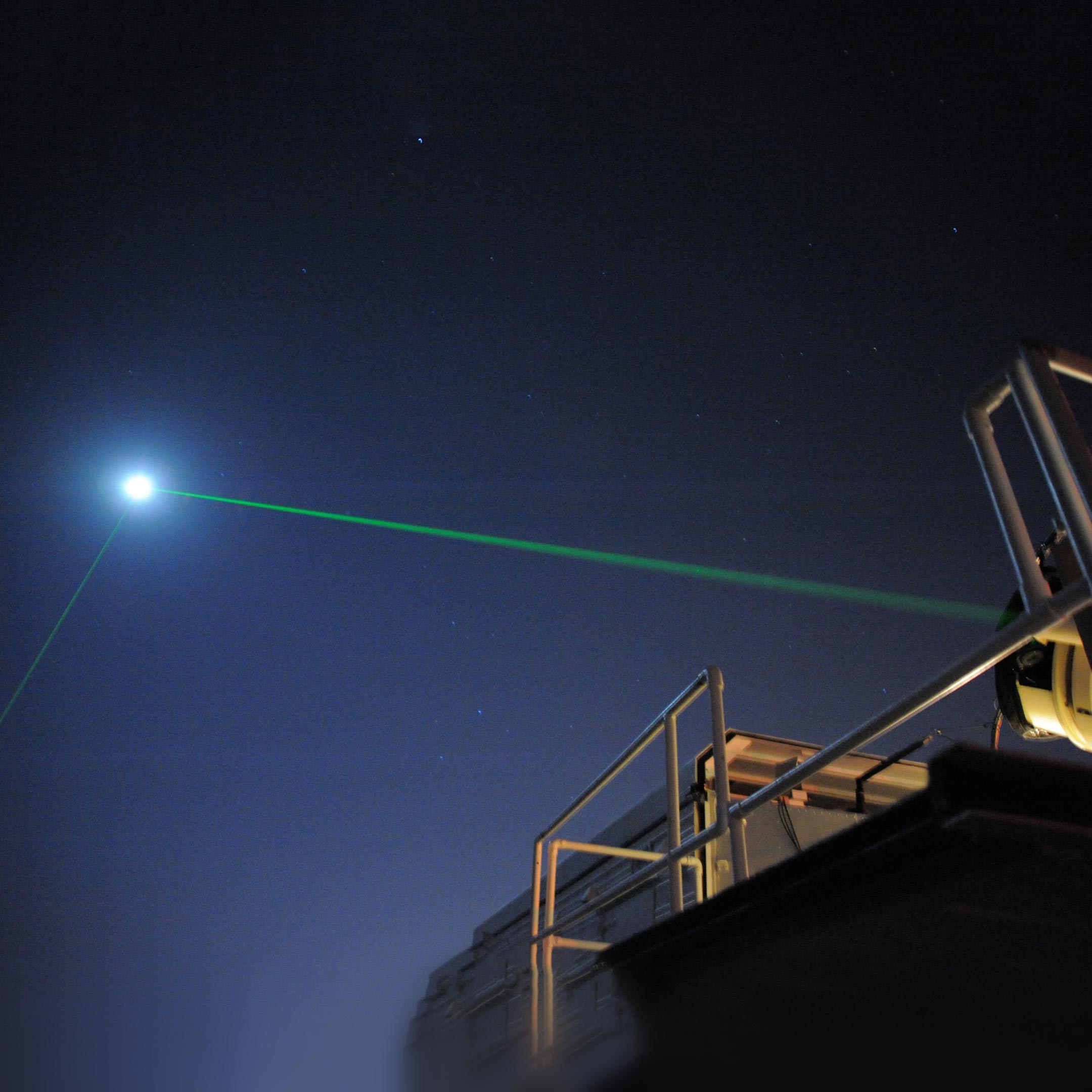
Dozens of times over the last decade NASA scientists have launched laser beams at a reflector the size of a paperback novel about 240,000 miles (385,000 kilometers) away from Earth.
The reflector NASA scientists aimed for is mounted on the Lunar Reconnaissance Orbiter (LRO), a spacecraft that has been studying the Moon from its orbit since 2009.
One reason engineers placed the reflector on LRO was so it could serve as a pristine target to help test the reflecting power of panels left on the Moon’s surface about 50 years ago.
Scientists have been using reflectors on the Moon since the Apollo era to learn more about our nearest neighbor.
One of the biggest revelations is that the Earth and Moon are slowly drifting apart at the rate that fingernails grow, or 1.5 inches (3.8 centimeters) per year.
But if scientists are to continue using the surface panels far into the future, they need figure out why some of them are returning only a 10th of the expected signal.
A close-up photograph of the laser reflecting panel deployed by Apollo 14 astronauts on the Moon in 1971.
Scientists hoped to use LRO’s reflector to determine if that’s true.
They figured that if they found a discrepancy in the light returned from LRO’s reflector versus the surface ones, they could use computer models to test whether dust, or something else, is responsible.
In the meantime, scientists continue to rely on the surface reflectors to learn new things, despite the weaker signal.
By measuring how long it takes laser light to bounce back — about 2.5 seconds on average — researchers can calculate the distance between Earth laser stations and Moon reflectors down to less than a few millimeters.
But they want to know whether there’s a solid core inside of that fluid, said Vishnu Viswanathan, a NASA Goddard scientist who studies the internal structure of the Moon.
The laser facility at the Université Côte d’Azur in Grasse, France, developed a new technique that uses infrared light, which is invisible to the human eye, to beam laser light to the Moon.
But to learn more, scientists first need to know the distance between Earth stations and the Moon reflectors to a higher degree of accuracy than the current few millimeters.
“The precision of this one measurement has the potential to refine our understanding of gravity and the evolution of the solar system,” said Xiaoli Sun, a Goddard planetary scientist who helped design LRO’s reflector.
Aldrin Jr., lunar module pilot, deploys two components of the Early Apollo Scientific Experiments Package on the surface of the Moon during the Apollo 11 extravehicular activity in 1969.
That translates to a one-in-25-million chance that a photon launched from Earth will reach the Apollo 11 reflector.
Weather at the laser station impacts the light signal, too, as does the alignment of the Sun, Moon and Earth.
That’s why despite several attempts over the last decade NASA Goddard scientists had been unable to reach LRO’s reflector until their collaboration with French researchers.
Their success thus far is based on using advanced technology developed by the Géoazur team at the Université Côte d’Azur for a laser station in Grasse, France, that can pulse an infrared wavelength of light at LRO.
One benefit of using infrared light is that it penetrates Earth’s atmosphere better than the visible green wavelength of light that scientists have traditionally used.
It may not seem like much, but even a few photons over time could help answer the surface reflector dust question.
A successful laser beam return also shows the promise of using infrared laser for precise monitoring of Earth’s and Moon’s orbits, and of using many small reflectors — perhaps installed on NASA’s commercial lunar landers — to do so.
This is why some scientists would like to see new and improved reflectors sent to more regions of the Moon, which NASA is planning to do.
Reference: “First two-way laser ranging to a lunar orbiter: infrared observations from the Grasse station to LRO’s retro-reflector array” by Erwan Mazarico, Xiaoli Sun, Jean-Marie Torre, Clément Courde, Julien Chabé, Mourad Aimar, Hervé Mariey, Nicolas Maurice, Michael K.
